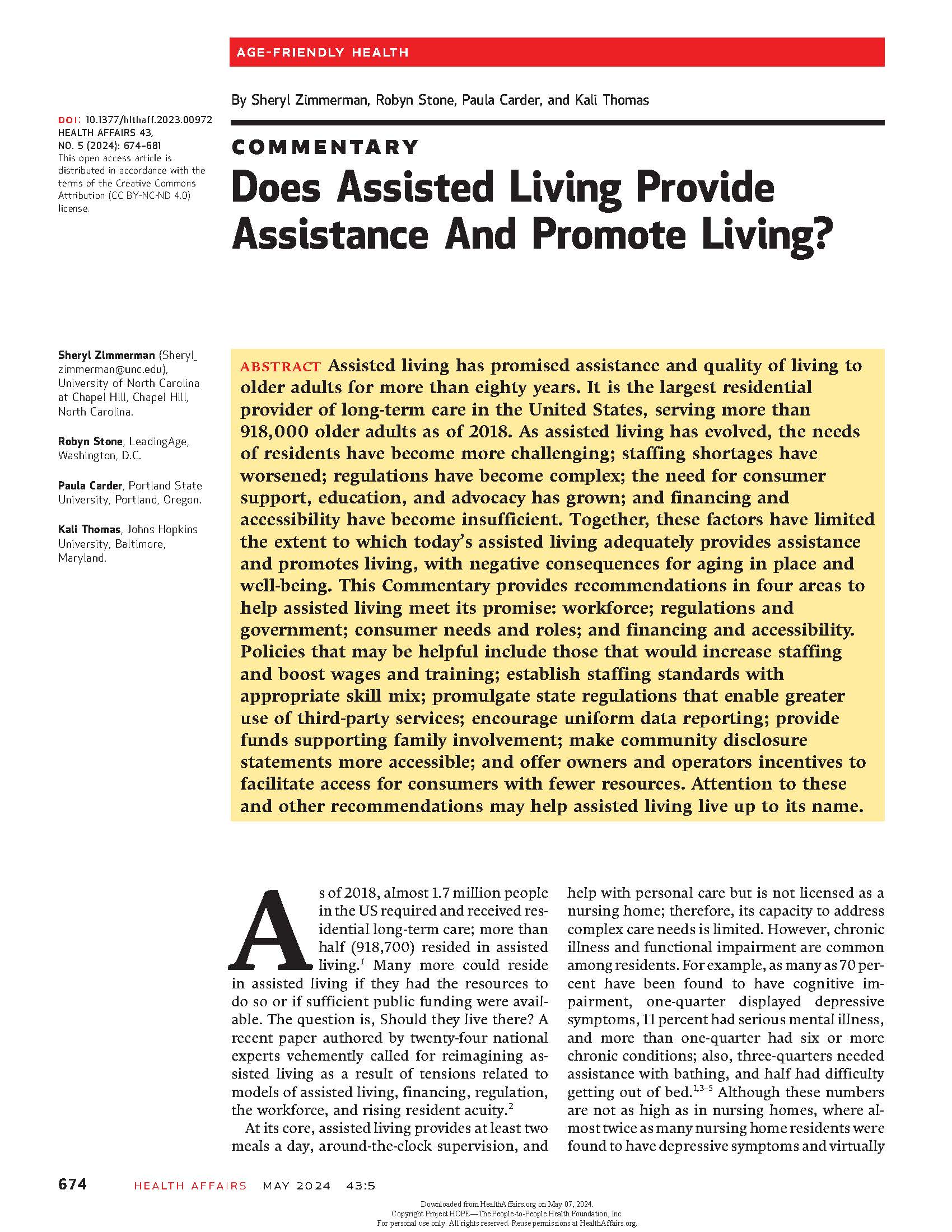Between January 2022 and December 2024, a total of 195 papers were published in academic journals that that included the word “assisted living” in the title/abstract. Each paper is listed below; clicking on the title will take you to the article or to an abstract/summary of the article. If you have questions about a paper, contact us.

Center for Excellence in Assisted Living CEAL@UNC
Advancing the well-being of the people who live and work in assisted living through research, practice, and policy.


